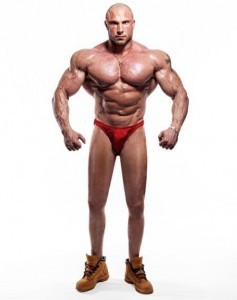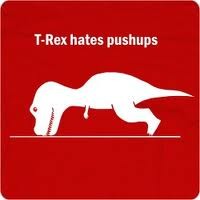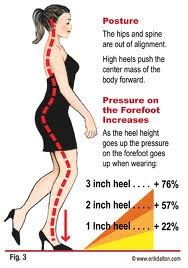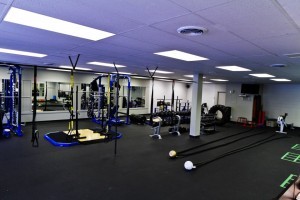There are a number of things we can do to improve our health and fitness. Strength training is one of the more popular options.And it's not an uncommon goal to hear people new to exercise describe their goal as wanting to get stronger.'I'd like to have stronger arms' says the woman as she massages the back of her triceps.'I'd like to be able to do a pull-up' says the female athlete trying out for a new team.'I'd like to deadlift xxx pounds' says the business executive that wants to be able to test himself in a gym setting.And these are all reasonable goals. But after we've trained for an appreciable amount of time e.g. 6-12 months, we notice the gains start slowing or stop altogether.For example, the person that has never deadlifted could pull 135 lbs in their first month. And it's not unreasonable to hit 225 lbs by their third month. This progress won't continue linearly for the rest of the year. In other words if three months is a quarter of the year we can't expect this person to increase their deadlift to four-times their three month total by the end of the year. This would result in a 900 lbs deadlift. That's not happening.So we get it that our strength has limits and that the gains come more quickly at the beginning.But at point should would be satisfied with our strength? When is enough strength, enough?Well, if you're a competitive lifter you're never satisfied with enough. You're always seeking an extra kilo on the bar or maybe a second rep at your max load.This is because the higher we get in a competitive field the harder it is to continually improve. Track and field shows us numerous examples of this. In the 100 m race it's not uncommon for...
Defining the Basics
- Chris Collins
- Fitness
- 1834 Hits
- 0 Comments
-
Nowadays there seems to be an emphasis on being good at the basics. You'll hear quotes along the lines of this theme. For example, 'an inch wide, a mile deep' was one I heard from my friend Sal at UCLA. What he meant by this was that in the weight-room they spend a lot of time getting really good at a few movements such as the squat and deadlift rather being just average on a number of exercises. And it makes sense. Too often we see athletes, led by poor coaches, trying to do too much. Maybe it's too much load. Maybe it's too many exercises. Many it's too many different tools to learn to become proficient. Maybe it's just too much volume. It could be a combination of a number of these. So why does this happen? Well I guess part of it comes down to a coach not having confidence in their philosophy. It's a coach not believing in their own program. 'If we only do a few basic things really well surely we will be missing out on something?' So they throw everything and the kitchen sink at the athlete. And with these comes lots of tools and gear. And we defend this type of training by calling it 'functional'. And with this topic Occam's Razor comes to mind. This means that the simplest solution is usually the best. For example, if I want to get my legs really strong, squats are going to be a really good choice. The version and stance doesn't matter as much as the selection of the exercise in this case. They would be better than lunges or step ups. Squats give me the best chance to overload the legs with resistance and stimulate a strength gain. So squats would be an example...
Two lessons from a powerlifting contest
Last Saturday we held another powerlifting contest at Okanagan Peak Performance Inc. Here's a quick recap of the day and two quick lessons that will help you improve your lifts. The one interesting thing about our powerlifting contests is how casual they are. We have the music playing. Everyone is joking around. And everyone is wearing triple layers of everything as it is -18 C outside. But once we get started we look forward to seeing who can lift what for deadlift, bench press, squat and 3 rep chin up. And it's always fun when friends and family come by to watch. One of them observed a successful deadlift, which involves picking a bar up off the ground and standing up with it, and commented 'now what?' Yes, it's true powerlifting may not impress everyone but it's still a great way to see where you're at. And besides seeing where you've made gains with your lifts you also learn quite a bit about the lifts themselves. Lesson #1 - Sticking Points ExposedFor example, you learn your sticking points. This is the part of the lift where the bar seems to stop moving and either leads to an unsuccessful attempt or results in spending an excessive amount of energy in order to complete the rep. Let's consider the bench press. If someone were able to press the bar off their chest but not be able to lock out the lift it may be that they lack triceps strength which is crucial for extending the arms and finishing a press. Maybe some isolated triceps training would help this person complete the rep more easily and push through to new gains. Or it could be that someone is able to pull a deadlift to mid-shin but lacks the glute and low back strength to...
Fitness Coaching with Analogies
When it comes to coaching everyone has a different style. Sure we pick things up from different coaches here and there. We'll steal a tip from this one. We'll adopt a practice from that one. But for the most part we have to figure what our style is and then develop it to the best of our ability. Learning to Lift Analogies For me one of the things I like to use when coaching is analogies. Big surprise right! Why analogies? Well because it allows the coach and client to find a common reference point regarding the concept being addressed. It gets away from the specific language and terms that both people may people may not be familiar. Analogies can also make the experience more fun. Because when someone steps on the training room floor they be very unaware of the technique required to perform a lift. Some may think they know what they're doing and then as a coach when you watch them lift you realize they don't. So you need to step in and coach them. Here's how I like to coach a lift. Analogies Save Time & Money First, of all don't let someone continue performing lots of reps the wrong way. This just ingrains a poor motor program which is then harder to fix later. For example, I wouldn't look over and say to myself 'wow, that guy (or girl) is using terrible form on their deadlifts! I should talk to them later.' That would be like watching someone drive past you in their car going the wrong way and you don't stop them. You let them continue on thinking they are making progress in the right direction but instead they are wasting time and money. Worse the path they are headed down may cause extensive damage...
5 Benefits of Barefoot Deadlifting
- Chris Collins
- Fitness
- Training
- Injury Prevention
- 2179 Hits
- 7 Comments
-
We have a number of our clients deadlift barefoot. And usually they ask us why? Below is my answer. In the last few years the pendulum has swing towards minimalist running shoes. From the Nike Frees to the Vibram 5 Fingers and everything in between there is definitely more awareness as to the benefits of barefoot running. And while it may not be necessarily in correlation to the barefoot running movement there are more people who workout barefoot on the gym floor. Or maybe they would like to train barefoot but their gym doesn't allow it. Some gyms, specifically ones in New Zealand, encourage barefoot training for their average to elite level members. For the novices and anyone with special needs regular footwear is required. When we're talking about gym workouts there is one exercise in particular that justifies barefoot training. And while many things in a gym may be done to look different but not actually serve a purpose this is something that will allow you to train more safely and effectively when you deadlift. Below are 4 Reasons to Deadlift Barefoot. Reason #1 - Better sensory inputWhen you deadlift you feet are what connect you with the ground. And this lift is definitely an example of press your heels through the floor to pull the bar off the floor and finish by extending the hips. If we are off balance we are not going to recruit the right muscles, at the right time and in the right plane. Any of my grade 10 science students will recall this is called neuromuscular efficiency. And our ability to be neuromuscularly efficient is enhanced when the sensory input from the ground through our feet is maximal. Think about it this way. We are taking in sensory input through our feet. How well...
A Day at Okanagan Peak Performance
- Chris Collins
- Training
- Fitness Equipment
- OPP News
- 1896 Hits
- 2 Comments
-
Often times people will stop in to our facility and ask what it is we do. They already have some idea because the signage out front identifies us as an athletic training facility and through the mindows they can see some of the equipment. But while there will be some pieces of equipment they will recognize there will also be some items which are foreign to them. For example, for what do we use the big wooden platforms are the floor? And what is the bench back by the med balls? And lastly why do you have a big tractor tire? And that's just trying to figure out the equipment. Imagine trying to make sense of the various types of training that goes on. Whereas most fitness centres are slower in the summer we are the opposite. Summer is the time winter sport athletes have an off-season. And it's also the time student athletes are home for the summer and can make gains with their training. And summer is when we run our youth fitness training camps. So when you add all of these to the mix it can make for a busy place. Take a look at the following video to see what I mean. http://youtu.be/AiRHwZ8fZ3M Let me walk you through everything that's going on here. The first thing you'll see is a client foam rolling before a training session. This is something we have all our clients do before training to release any knots or trigger points. Next the shot shows Matt and Jordy doing a powerlifting session. Matt is doing deadlifts on the platform and Jordy is doing presses beside him. All the way in the back corner you'll see someone in a Group Fitness session performing a hip mobility drill at the squat rack. This involves stepping over the...
Deadlift Like a Super Hero
- Chris Collins
- Training
- 2043 Hits
- 0 Comments
-
Have you seen the movie The Avengers? If not you should check it out. And you don't have to be a comic book geek and know the story line. Even if you haven't seen the Iron Man movies or Captain America you'll still enjoy this one. And while most girls usually don't care for these kinds of movies my wife liked it. Wonder if that had anything to do with the fact that every male in the show was ripped? Anyways there was a scene during the movie that got me thinking about you. Seriously. And I wanted to make sure to let you know about this as soon as I could. So what was it from The Avengers that made me think of you? Well first of all you need to know a couple of the characters. The first one is Hulk. He's normally a likeable scientist named Dr. Bannister but when you make him mad he turns into a huge green monster that likes to smash things. The other guy to tell you about is Thor. He has supernatural strength and is the only one who can wield his hammer. In fact no one else can even pick up his hammer, let alone use it as a weapon. And this brings us to the battle scene between Thor and Hulk. Thor is using his hammer to beat on Hulk until he loses his grip on the hammer. Hulk goes to pick up the hammer but nothing happens. Well that's not entirely true. Hulk pulls so hard on the hammer that his feet break through the floor. But the hammer doesn't budge. And that's exactly what you should be thinking of when you deadlift. But let's back up and set the stage here so you understand exactly how to pull a...



